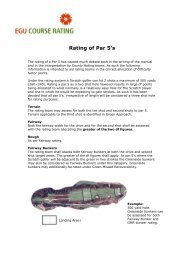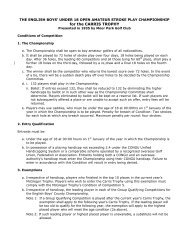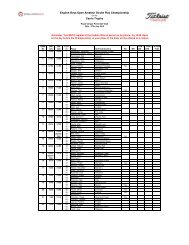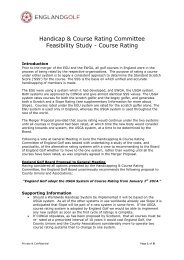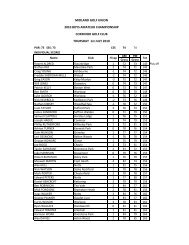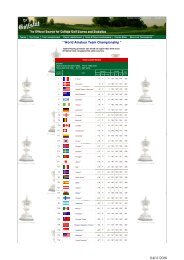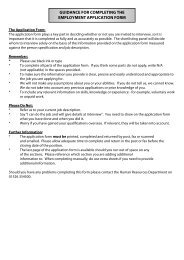Waste management - England Golf
Waste management - England Golf
Waste management - England Golf
You also want an ePaper? Increase the reach of your titles
YUMPU automatically turns print PDFs into web optimized ePapers that Google loves.
The Maintenance Facility:<br />
Best practice guide to the <strong>management</strong> of selected maintenance streams<br />
Best Practice Guidelines<br />
Tyre storage<br />
Spare tyres should be stored inside, in a<br />
secure area in order to prevent health and<br />
safety issues.<br />
Storage of used tyres prior to disposal<br />
should be indoors, on a hard standing<br />
impervious base and safely stacked in a<br />
secure area.<br />
Tyre disposal options<br />
If you transfer waste tyres to someone<br />
else, you must be sure they are authorised<br />
to take them.<br />
All authorised waste carriers are registered<br />
with The Environment Agency and have a<br />
certificate of registration.<br />
A list of licensed waste tyre handlers is<br />
available at www.tyredisposal.co.uk.<br />
Ensure that your waste tyres will be reused,<br />
recycled or recovered.<br />
Re-use of part-worn tyres<br />
Extracting the maximum safe life from a<br />
tyre saves valuable resources (oil, rubber,<br />
steel, etc.). Before the tyre can be resold it<br />
must be checked. Part-worn-tyres must<br />
have a minimum of 2 mm tread remaining<br />
and be marked as part-worn on both sides<br />
at the time of sale.<br />
Tyres<br />
The problem with tyres<br />
Over 50 million tyres (just over 480,000 tonnes) are scrapped in the UK each year<br />
and around 80,000 tonnes are disposed of in landfill. Although golf clubs are not<br />
recognised as a major producer of tyre waste, the safe disposal of used mower,<br />
tractor or other machinery tyres is an important issue, especially given the high<br />
polluting effect of improper disposal and the new stringent legislation.<br />
Tyres use non-renewable resources in their production, cause emissions to air,<br />
land and water as fine particles are worn off during their use, and require<br />
<strong>management</strong> at the end of use (Environment Agency, 1998f). It is tyres, rather<br />
than engines, that are the major source of noise pollution associated with roads.<br />
Legislation relating to tyres<br />
The EU Landfill Directive will ban the disposal of tyres to landfill. In brief, whole<br />
tyres were banned from July 2003 and shredded tyres from July 2006. The ban<br />
applies to almost all tyres including car, commercial, motorbike, aircraft, and<br />
industrial (including solid tyres). However, tyres above 1.4 metres outside<br />
diameter (e.g. larger agricultural and earthmover tyres) will not be subject to the<br />
ban.<br />
The Duty of Care is a legal requirement under the Environmental Protection Act<br />
1990. It applies if you produce, import, carry, keep, treat, or dispose of waste<br />
tyres. It requires you to take all reasonable steps to ensure that waste tyres are<br />
not handled illegally and that they are only transferred to an authorised person<br />
together with a waste transfer note.<br />
Recycling through re-treading<br />
Tyre re-treading is a major industry in the<br />
UK. Re-treading involves either replacing<br />
only the tread section or replacing rubber<br />
over the whole outer surface of the tyre.<br />
Manufacturing a re-tread tyre for an<br />
average car takes 4.5 gallons less oil than<br />
the equivalent new tyre and for<br />
commercial vehicle tyres the saving is<br />
estimated to be about 15 gallons per tyre.<br />
Car tyres can only be re-treaded once but<br />
truck tyres can be re-treaded up to three<br />
times.<br />
Continued...<br />
WASTE MANAGEMENT<br />
Best Practice Approach for English and Welsh <strong>Golf</strong> Clubs<br />
30




